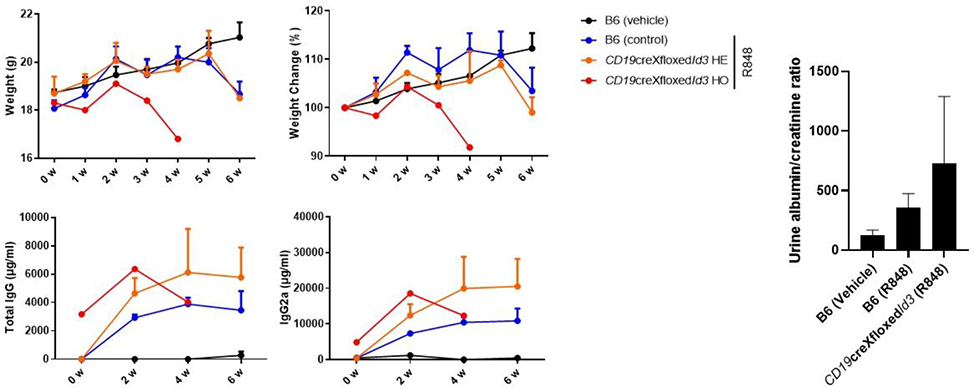

Background: Id3 is a member of the inhibitor of DNA binding (Id) family which is a helix-loop-helix protein acting as a transcriptional regulator. Previous studies have reported that Id3 plays an important role in development and function of regulatory T cells in lupus. However, its role in B cells remains unclarified.
Objectives: To investigate a role Id3 in B cells and lupus pathogenesis.
Methods: To investigate a role of Id3 in B cells, we generated C57BL/6 mice with a CD19Cre-mediated B cell-specific depletion of Id3 as well as mice (Id3-/-) with conventional knockout of Id3. In these mice, we evaluated presentation of lupus-mimicking phenotypes and changes of immune cell populations. Additionally, we assessed influences of B cell-specific Id3 depletion in lupus-induced mice by R848.
Results: In Id3-/- mice, proportions of effector T cells such as Th1, Th2, and Th17 cells were elevated whereas those of regulatory T cells were lower than in control mice. Furthermore, proportions of plasma cells were significantly elevated in Id3-/- mice. These mice presented with increased inflammation in kidney tissues, resembling lupus nephritis. Elevated proportion of plasma cells was replicated in mice with B cell-specific Id3 depletion. Induction using R848 resulted in exacerbated lupus-like manifestations including increased proteinuria and higher serum immunoglobulin levels in B cell-specific Id3-depleted mice than in control mice. In an in vitro study, CD19+ B cells from Id3-/- mice were more differentiated into plasma cells than those from control mice whereas there were no significant differences in other B cell subsets.
Conclusion: Genetic suppression of Id3 in murine models exacerbated lupus-like phenotypes with aberrant B cell differentiation. These findings may imply a potential role of Id3 in the pathogenesis of lupus.
REFERENCES: NIL.

Acknowledgements: This research was supported by Basic Science Research Program through the National Research Foundation of Korea (NRF) funded by the Ministry of Education (grant number: 2022R1I1A1A01068210).
Disclosure of Interests: None declared.